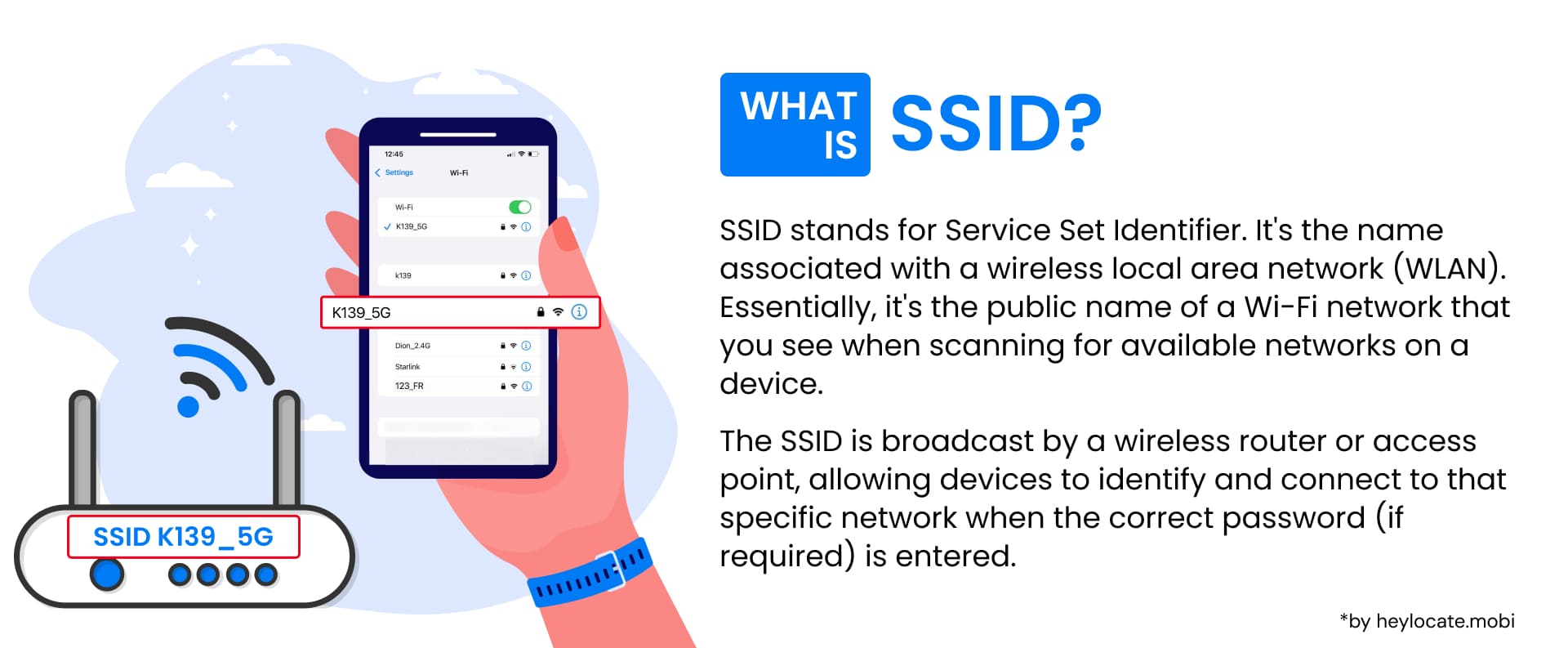Service Set Identifier (SSID)
What is SSID?
The Service Set Identifier (SSID) is a unique identifier used in wireless networking, specifically within the IEEE 802.11 standards. It serves to group wireless network devices into service sets, facilitating communication and connectivity between these devices.

Understanding Service Sets
A service set is a group of wireless network devices that form one logical network segment, enabling devices within the set to communicate with each other and establish connections. These devices operate under the same parameters and configurations, including the same frequency band, channel, security settings, and other network-specific attributes.
Types of Service Sets
| Basic Service Set (BSS) | A subgroup within a service set that shares the same physical-layer medium access characteristics. It represents a collection of wireless devices that connect to the same access point, forming the building block of wireless networks. |
| Extended Service Set (ESS) | A collection of two or more BSSs connected together through a distribution system. This distribution system enables seamless roaming between BSSs within the same ESS, allowing wireless devices to move between different access points while maintaining a continuous connection. |
Types of SSIDs
- Broadcast SSID: This is the most common type of SSID, where the network name is publicly broadcasted by the access point, making it visible to nearby devices searching for Wi-Fi networks.
- Hidden SSID (Null SSID): A hidden SSID is not broadcasted by the access point. Devices can only connect to a hidden network if they know the exact SSID beforehand. This offers an additional layer of security by making the network less visible, but it also requires manual configuration on devices.
Functions of SSID
- Network identification: SSID helps users identify the specific wireless network they want to connect to from a list of available networks.
- Connection establishment: Devices use the SSID to connect to the intended wireless network.
- Security: While SSID itself doesn’t provide strong security, it can be used in conjunction with WPA2 encryption to secure the network.
Customization of SSID
Network administrators can customize the SSID to a name that reflects the network’s purpose or location. However, SSIDs have character length limitations (typically up to 32 characters) and must adhere to specific encoding standards for proper functionality.
SSID in Network Packets
The SSID is included in beacon frames transmitted by access points. These beacons advertise the presence of the network and allow devices to discover it.
References
- Service set (802.11 network) – Wikipedia
- What is an SSID (Service Set Identifier)? | Definition from TechTarget
- What is an SSID and how can you find yours? | NordVPN
- What is an SSID for Wi-Fi? Kaspersky
- What is an SSID? | How to Find & Protect Yours
- What Is SSID (Service Set Identifier) and How to Change It | Security.org
- What Is SSID and Why Is It Important For Your Wi-Fi Network? ClearVPN